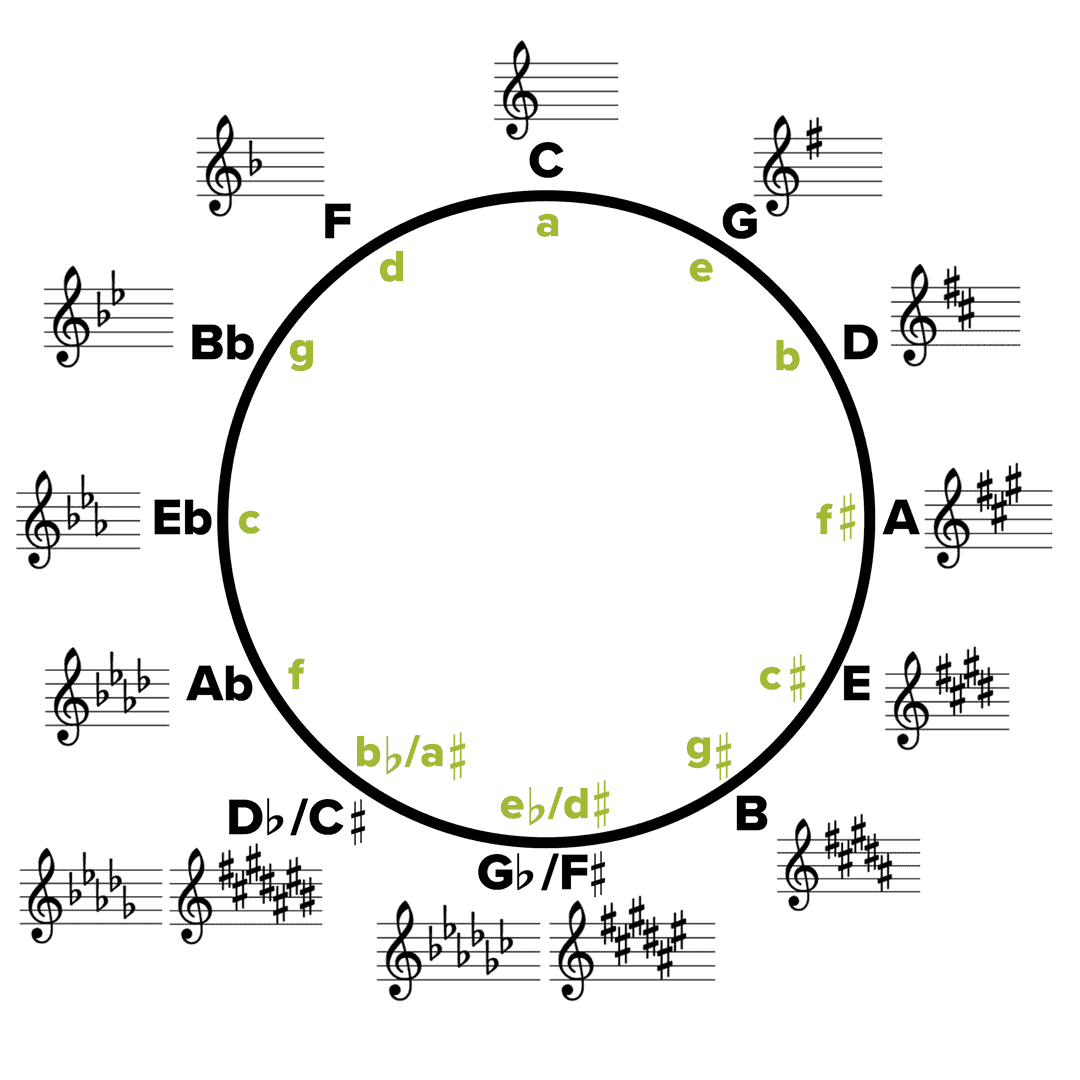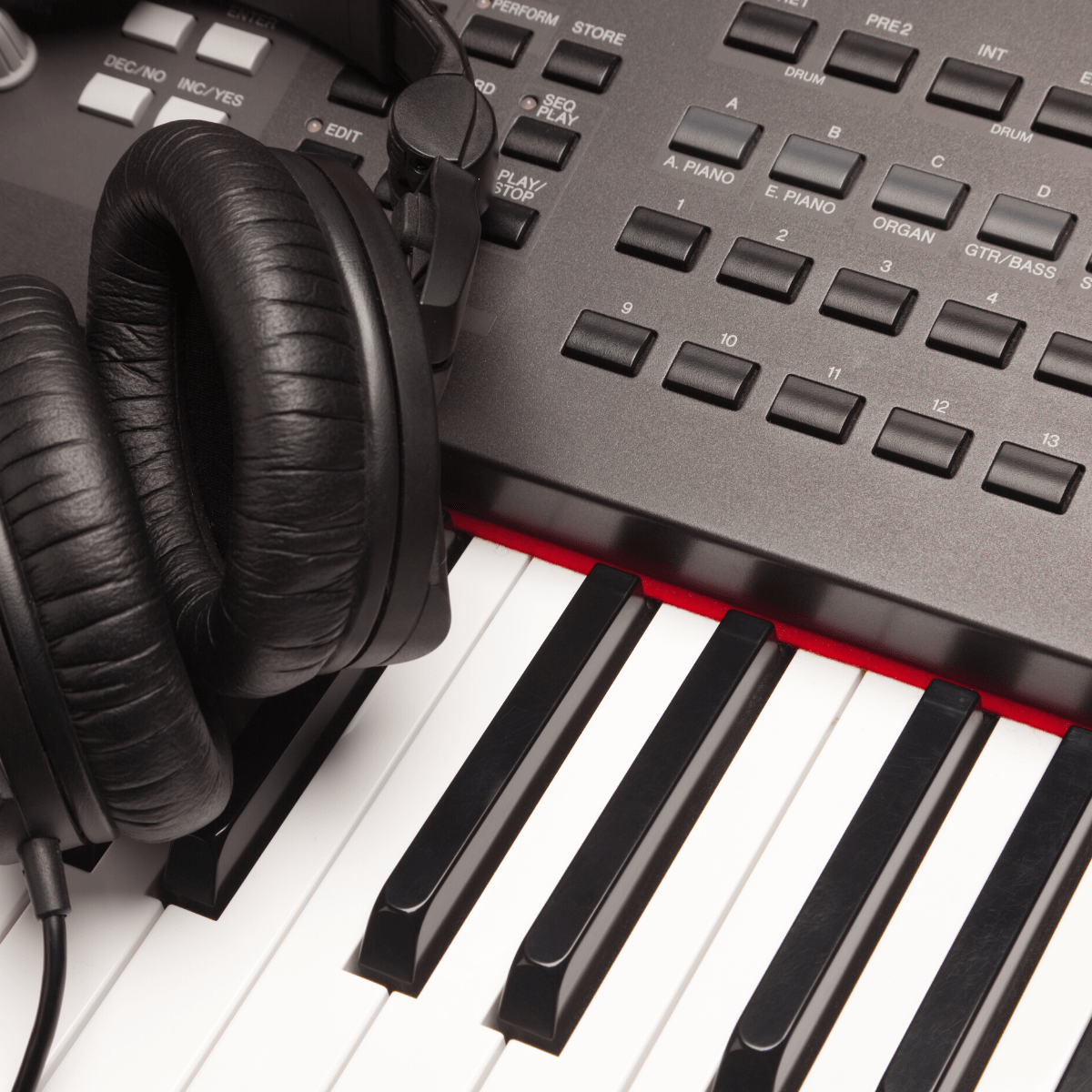Piano Improvisation: How To Develop Improv In A Fun Way

This article comes from professional musician Chris Senner, who is here to share his songwriting and improvisation knowledge with you!
Being able to improvise on the piano is like opening up your brain to a theme park that can provide you with the ultimate satisfaction for your mind.
I started playing the piano when I was eight years old, and I became absolutely hooked. While taking piano lessons and learning the beginner material, I began to want to learn more. Because I loved the piano so much, I would listen to my favorite songs with my Walkman, and I would rewind and play along with the songs until I was able to learn them.
Looking back, I started to think that all pianists are capable of learning improvisation; they’re just under the belief that they “don’t have the ear” for it.
Piano improvisation is not hard. It is something that just requires time & patience, just like anything else with the piano. You typically don’t learn difficult classical pieces in a week, especially when starting out. This is the exact same with learning how to improvise. While some people for sure have better ears than others, the ear can be developed, just like sight-reading can be developed.
I remember hearing incredibly talented classical pianists tell me that they couldn’t improvise, and I always thought to myself, “How can someone be that good at something, but not be able to play without music in front of them?”
This was my thought as I was just a kid. Now, looking back, it makes sense.
Technical skill and ability are completely separate to be able to improvise off of the top of your head. With this being said, they can go hand in hand very well as the more technical you can play, the more creative you can get.
I have the opinion that if more students learned how to improvise, they would play the piano longer. While not every pianist desires just to write and play their own music, it is definitely a new world that is just so exhilarating.
I want to highlight some techniques I use while improvising and songwriting. I find that the two often go hand in hand. Before doing so, I want to touch on a couple of the basics in music theory first.
Learning The Circle Of Fifths
The circle of fifths was something that really took my improvisation game to a new level when I was younger. I learned how to improvise the hard way as I taught myself.
In doing this, I would randomly listen to songs and figure out chord progressions they were using, but I didn’t truly understand them or how to transpose them into different keys.
You can use the circle of fifths to your advantage when improvising in a significant way.

Note: You will notice that with every key, there’s another key inside of the circle. These keys are the keys relative minor. For example, C Major is also the same key signature as a minor, with them both having zero sharps or flats.
So what’s so crucial with knowing the circle of fifths? Once you memorize it, you will know all of the key signatures that you are improvising in.
Developing Your Ear
When it comes to learning how to improvise, developing your ear is one of the most important things to be stressed. This is a skill that you can develop very far or just far enough for improvisation & songwriting.
For example, in college aural theory, you dive super deep into being able to determine entire melodies just with your ear.
Personally, I don’t believe that you need to take it that extreme to be able to improvise like a professional. I would argue that the ability to be able to write the melody and play is just as important.
Using Songs To Develop Your Ear
Take a song that you like and listen to it. While it’s playing, play notes on your piano. You will notice that certain notes sound atrocious. This is because you’re not in the right key.
Doing this thousands of times really helped my ears. Once you hit a note that is in the key or maybe even part of the chord being played in the song, you will hear it.
You can then figure out the scale and determine what key you are in. This sounds very difficult, but it really is simple. You will be able to tell if a note is simply not in the key signature.
Chord Progressions To Learn While Improvising
When you are on your journey to improvising freely and composing your own music, you will start to notice a few things while learning. For example, I used to get so confused when trying to learn songs by ear at times.
I would figure out the chords and think, “Why am I playing these chord progressions, but they’re in a different key?” What I didn’t get was, a lot of compositions will start on the IV chord.
For example, if we are improvising in C Major, the IV chord would be F Major. If you take modern compositions, you will see this over & over. I personally love starting on the IV chord myself.
With this being said, when you start on the IV chord, you would still be in C Major. This means that I could hit any white key and have it still sound good.
So, what are some great chord progressions to learn for improvising over?
Let’s take the key A Major. It has 3 sharps, with those being F#, C#, and G#.
Note: I have written the roman numerals for the chords with the actual notes in parentheses as well.
Here is a guide for what notes go with each chord:
- I(A,C#E)
- ii(B,D,F#)
- iii(C#,E,G#)
- IV(D,F#,A)
- V(E,G#,B)
- Vi(F#,A,C#)
- vii°(G#,B,D)
Let’s look at some chord progressions that will greatly help in learning to improvise and write songs:
- I, ii, Vi, V
- ii, I, Vi, V
- I, Vi, V
- IV, Vi, V, I
- I, iV, Vi, V
- Vi, I, V, iV
- V, Vi, IV
- I, Vi, IV, V
- I, iii, IV
- I, V, IV
You can use these progressions as rough templates to work on your improv skills.
A Guide To Piano Improvisation
Most songs that I have written are complete spur of the moment ideas. With this being said, I’ve noticed that improvising on the piano has been the most effective way for me as a songwriter. All it takes is for me to hit a few notes in a row to then think to myself, “Oh, this sounds cool.”
Now that I laid out the basics briefly above, let’s get into what I do as a pianist when it comes to improvising.
For the following tips below, I sat down at the piano and wrote down my process and what I noticed.
Suspensions
When I’m improvising, I heavily rely on suspensions. This is one of the big things I noticed in not only improv, but also songwriting. Suspensions just sound good.
I noticed I am rarely playing block triad chords, and that in my right hand, I almost always am including a suspension in the chord. For example, if I’m playing a C major in my left hand, you can almost bet that I will be hitting a D note, F note, or A note.
Using suspensions is something that also makes things sound unique. You can take a typical boring chord progression like, I, V, VI, IV, and make it sound a bit different by adding in suspensions.
The way you use suspensions and get to them in your playing also adds to your own style of playing.
Avoiding Block Chords
When I was first learning how to improvise, I did the standard block chord approach. This is where I would bang out a chord progression with my left hand and simply improvise over the top with the right.
I noticed that, even if I’m playing chords in the left hand, I am rarely just playing the typical 1-3-5 or (CEG) chord. Developing an understanding and constantly pushing boundaries while playing chords really helped me develop my own style.
Writing The Melody With Your Left Hand
This is an approach that I’m not really sure I’ve seen other people talk about. With this being said, to find the start of a melody, I will lay down some chords in my right hand and then come over the top with the left.
I’ll do this for songwriting, and it’s basically a way to just break up the monotony of using the same approach.
This will greatly improve your left-hand skills and help you develop confidence in relying on your left hand.
It will also help you when you start to jump into more complex jazz improv.
Metronome Use
This sounds pretty silly. Well, if you want to get good at improvisation, playing in time is crucial for not only playing solo but also when playing with a few others.
With this being said, I have developed some drills that I think work well to do 3-5 times per week. You can do them more if you like them as this would only help.
- Set a metronome to a random BPM
- Isolate your hands
- Set a timer for 60 seconds
- Play with one hand at a time from the top of your head
- You want to force your brain into thinking on the spot
- Switch hands and play for another 60 seconds
- Bring both hands together for a final 60 seconds
Now, you can look at this approach as coming up with something different every 60 seconds, or you can actually build an idea. It’s totally up to you, but if you do this a few times a week, you will start to see some major improvement in being able to think on the spot.
When doing this, it is important not to give up and give in to the idea that piano improvisation is just something you don’t have. I think that is just rubbish and that all pianists can pick up on improv in some way or another.
Arpeggios
Using arpeggios is something that I often do when improvising. I find that while playing an arpeggio, I can often hear notes that I can jump to during or after I’m done playing the arpeggio.
The idea here is that you’re hitting a bunch of notes in a short amount of time. Train your ear to listen to the notes to determine where you want to go next.
If you’re soloing or heavily using your right hand, starting with an arpeggio can change it up and allow you to figure out your next move.
Record Your Improv Sessions
Recording improv and going back to it is something most pianists don’t do enough of. When I started writing music relentlessly in 2012, I would record all of my sessions.
This allowed me to go back, not only find ideas I liked, but to also see what I’m doing and areas that I can improve in.

Pick A Different Key To Improvise In
When you start to play, try to be conscious of what key you are starting in. Try to mix it up each time you sit down, so you don’t only jump to the same key.
I find that by always playing in new keys, I see chords much differently, and I don’t get bored with it. If you sit down and you always start in d minor, you’re going to run into the chance of going to the same chords and runs often.
Switching up the key will also allow you to draw parallels with chord progressions as you’re learning. You’ll be able to see similar chord progressions expressed in different keys.
Using Drum Loops To Improv Over
This will really take your game to the next level. All the little syncopations that you hear with the drums will help you develop your technical game.
You can access drum loops by using a DAW or by pulling up stock drum loops on certain keyboards. Switch up the genres often, so you’re not going into the same style of grooves too much.
30 Days Of Improv
Now, more than ever, is a great time to work on your improvisation skills. Try and get 20-30 mins straight of improv a day for 30 days. If you’re new to improv, you will notice a big difference after 30 days.
Chris Senner is the founder of KeyboardKraze. Over the last 6 years, he has toured the country playing keyboards in the band Vinyl Theatre. Chris has been playing keyboards for over 20 years and loves to share his knowledge on his website.

